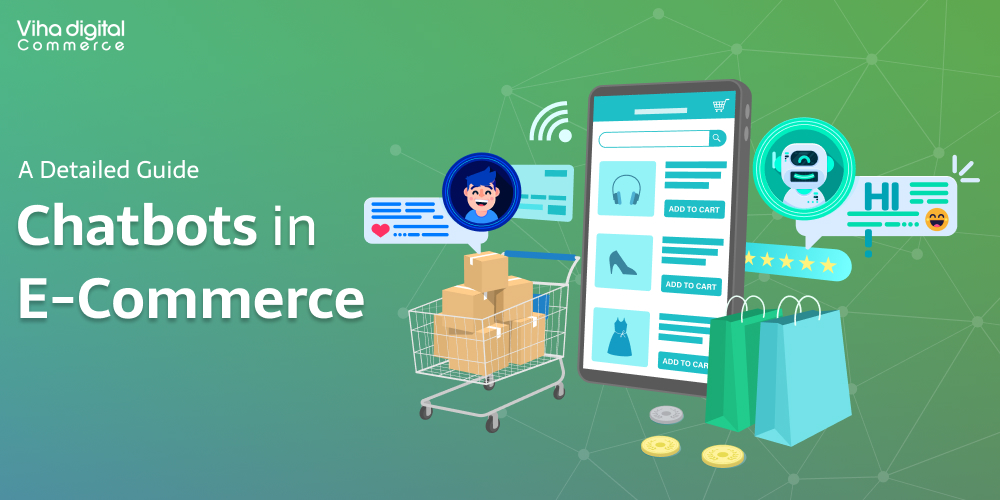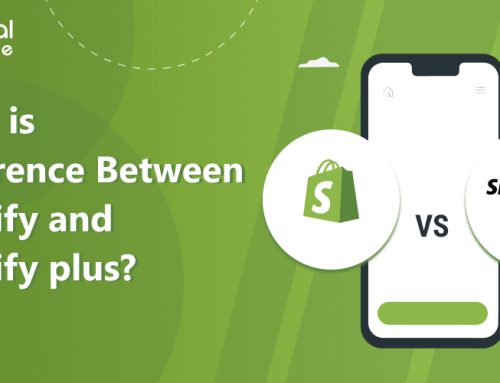
Chatbots : A Detailed Guide To Understand Their Benefits In Ecommerce
Chatbots have become a transformative tool in the realm of e-commerce, offering businesses an efficient way to interact with customers, provide support, and boost sales. For Shopify store owners, integrating chatbots can significantly enhance customer experience and streamline operations. This blog will explore what chatbots are, the different types of chatbots, how they work, and the benefits of using chatbots for e-commerce, particularly for Shopify stores.
What is a Chatbot?
A chatbot is a software application designed to simulate human conversation. It interacts with users through text or voice, providing responses based on pre-defined rules or artificial intelligence (AI). Chatbots can be integrated into websites, messaging apps, and social media platforms to provide instant responses to customer inquiries, support transactions, and perform various automated tasks.
Types of Chatbots
There are two main types of chatbots: rule-based chatbots and AI-powered chatbots. Each type has its own set of functionalities and use cases.
Rule-Based Chatbots
Rule-based chatbots operate on a set of predefined rules and decision trees. They follow a scripted flow and can only respond to specific commands or questions that they have been programmed to understand.
Advantages:
– Simplicity: Easy to develop and deploy.
– Control: Provides precise responses based on specific inputs.
– Cost-Effective: Generally less expensive to build and maintain.
Disadvantages:
– Limited Flexibility: Cannot handle unexpected queries or understand context.
– Maintenance: Requires regular updates to expand its knowledge base.
Example Usage:
A rule-based chatbot for a Shopify store could help customers with basic queries such as store hours, product availability, or order status updates.
AI-Powered Chatbots
AI-powered chatbots use machine learning (ML) and natural language processing (NLP) to understand and respond to user queries. These chatbots can learn from interactions, adapt to new inputs, and provide more accurate and contextually relevant responses over time.
Advantages:
– Flexibility: Can handle a wide range of queries and understand context.
– Learning Capability: Improves over time through interactions.
– User Experience: Provides more natural and engaging conversations.
Disadvantages:
– Complexity: More complex to develop and require advanced technology.
– Cost: Higher development and maintenance costs.
Example Usage:
An AI-powered chatbot for a Shopify store could provide personalized product recommendations, handle complex customer service inquiries, and assist with the entire shopping journey from product search to checkout.
How Chatbots Work
Chatbots operate through a series of steps that involve input processing, response generation, and continuous learning (for AI chatbots).
Input Processing
When a user interacts with a chatbot, the input is first processed to understand the intent and extract relevant information. For rule-based chatbots, this involves matching the input to predefined rules. For AI-powered chatbots, NLP algorithms analyze the text to understand the intent and context.
Response Generation
Once the input is processed, the chatbot generates a response. Rule-based chatbots retrieve responses from a set of predefined options, while AI-powered chatbots generate responses based on learned patterns and data.
Learning and Improvement
AI-powered chatbots use ML algorithms to learn from each interaction. They analyze past conversations to improve future responses, understand new phrases, and adapt to changing user behavior. This continuous learning process makes AI chatbots more effective over time.
Benefits of Chatbots for E-Commerce
Integrating chatbots into e-commerce platforms like Shopify offers numerous benefits that can enhance customer experience, increase sales, and streamline operations.
24/7 Customer Support
Chatbots provide round-the-clock customer support, ensuring that customers can get assistance at any time. This leads to higher customer satisfaction and reduces the need for a large customer service team.
Instant Responses
Chatbots can handle multiple queries simultaneously and provide instant responses, reducing wait times for customers. This efficiency is particularly beneficial during peak shopping periods.
Personalized Shopping Experience
AI chatbots can analyze customer data and provide personalized product recommendations based on browsing history, past purchases, and preferences. This personalization can drive higher sales and customer loyalty.
Streamlined Operations
Chatbots can automate routine tasks such as order tracking, FAQs, and appointment scheduling, freeing up human resources to focus on more complex tasks. This automation can lead to significant cost savings and operational efficiency.
Increased Engagement
Interactive chatbots can engage customers in real-time, offering assistance, upselling products, and guiding them through the shopping process. This engagement can lead to higher conversion rates and increased sales.
Data Collection and Analysis
Chatbots can collect valuable data on customer interactions, preferences, and behavior. This data can be analyzed to gain insights into customer needs and improve marketing strategies.
Integrating Chatbots with Shopify
Integrating a chatbot with a Shopify store involves several steps, including selecting the right chatbot platform, customizing the chatbot to align with your brand, and continuously monitoring and updating the chatbot to improve its performance.
Selecting the Right Chatbot Platform
Choose a chatbot platform that supports integration with Shopify and offers the features you need, such as AI capabilities, multilingual support, and analytics. Some popular chatbot platforms for Shopify include Tidio, Chatfuel, and ManyChat.
Customizing the Chatbot
Customize the chatbot to reflect your brand’s voice and style. This involves creating scripts for rule-based chatbots or training AI chatbots with relevant data. Ensure that the chatbot can handle common customer queries and provide accurate information.
Monitoring and Updating
Continuously monitor the chatbot’s performance using analytics tools provided by the chatbot platform. Analyze customer interactions, identify areas for improvement, and update the chatbot regularly to enhance its effectiveness.
Conclusion
Chatbots are an invaluable tool for modern e-commerce, offering numerous benefits that can enhance customer experience, streamline operations, and boost sales. Whether you choose a rule-based chatbot for simplicity and control or an AI-powered chatbot for advanced capabilities and personalization, integrating chatbots during your Shopify store development can provide a significant competitive advantage. By understanding the different types of chatbots, how they work, and their benefits, you can make informed decisions and leverage this technology to grow your e-commerce business.
editor's pick
Harnessing the Power of Magento 2 GraphQL API: A Developer’s Guide
In the dynamic world of e-commerce, efficient and flexible [...]
Unlocking the Potential of Magento 2 B2B: A Comprehensive Guide
In the world of B2B e-commerce, having a robust, [...]
Viha Digital Commerce Gets Recognized as Clutch Global Leader for Spring 2024!
It is a privilege for Viha Digital Commerce to be named [...]






